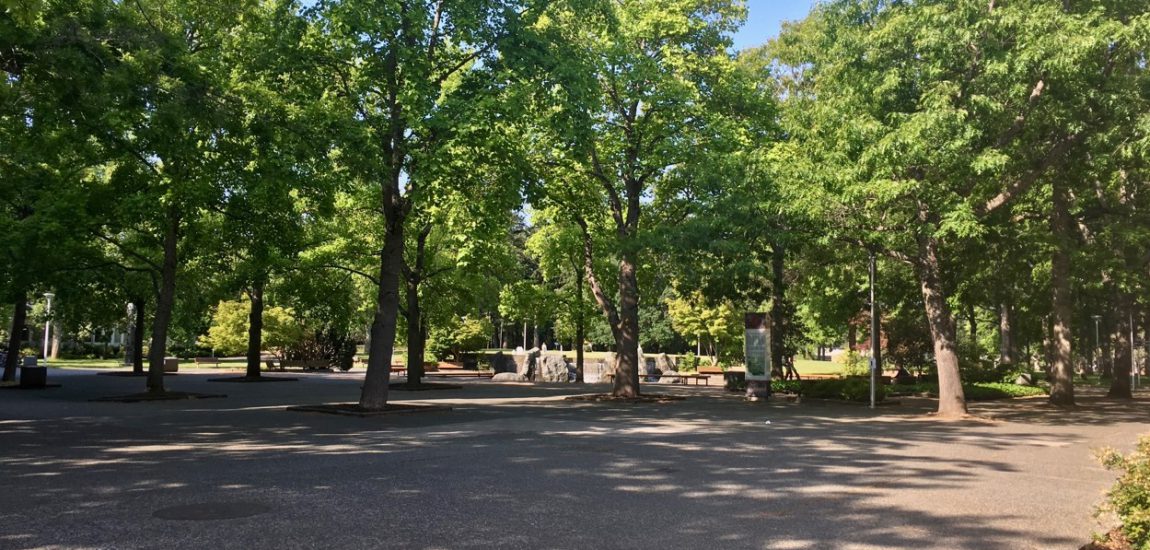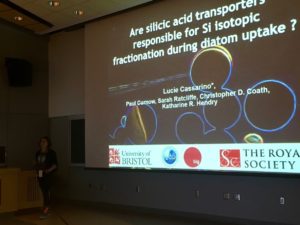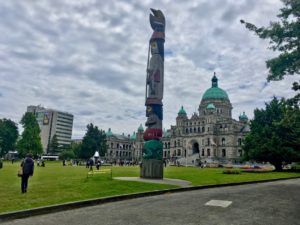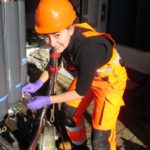
Silicon world science: an EAG Ambassador at SILICAMICS 2

SILICAMICS 2 (Victoria, CA. June 2018) was the second SILICAMICS conference (first held in Aber Wrac’h, FR. September 2015). The conference focuses on the biogeochemistry and genomics of silicification and silicifiers, which gives the opportunity for international scientists working on silicon from all horizons to meet together. I attended the first SILICAMICS conference during the first year of my PhD, and this time I was there as an early career scientist.
It is stunning how different my experience was between the two conferences. Back then I presented a poster on the preliminary data of a project looking at silicon isotopic fractionation related to silicic acid transporters in diatom (phytoplankton) membranes during silicon uptake. The project was quite a challenge because it brought together biochemistry and geochemistry laboratory work, which to my knowledge has not been done before on silicified organisms. For the second conference, I gave a talk on the same project, showing the results and the work I had done since. I felt a little intimidated about giving this talk because the results were not clear, but I knew it would be the best place to present them in order to get helpful feedback from both biochemists and geochemists. Furthermore, attending this conference was a great opportunity to meet scientists in the silicon world who I had not yet met, and to reunite with international colleagues I had not seen for a long time.
The conference was located in Victoria, which added to the excitement as it was my first time in Canada. As I am French, I was very surprised that, outside Québec, people at the airport and other places said “HelloBonjour” as a single word to say hello! The flight from the UK made for a very long journey, so I decided to take a day to visit Victoria before the conference. Victoria is a beautiful city with, for example, an astonishing view of the Olympic National Park, and I would definitely like to revisit the city one day.
During the three days of the conference everything was very well organised: breakfast, lunch and dinner were provided, and the timing gave lots of opportunities to talk with everybody. It was located at the University of Victoria, which stands on traditional Lkwungen territory. The university campus is superb and a relaxing place to be, with wild space everywhere. Over the three days, some great talks were presented and many of them posed enlightening questions and ideas. My presentation was the last talk on Thursday, and it went well, with constructive comments and questions. I had some fantastic chats about new experiments that could be carried out to answer some outstanding questions surrounding my project. Furthermore, I had the opportunity to sit and talk about another project I have on deep-sea sponges, and possible collaborations that could be forged in the future. The conference was a great success and the most useful I have attended, as I can feel that I now contribute to the group.

About the author

Lucie Cassarino is currently a Research Associate at the School of Earth Sciences of the University of Bristol, UK. Her research focus is on the fractionation of the silicon isotopes in the ocean from the micro to macro scale. Lucie’s background is in biogeochemistry, and during her PhD she investigated the effect of biochemical processes involved during biological uptake on the fractionation of silicon isotopes. She also uses silicon isotopes to examine porewater-sediment dynamics and to evaluate the water mass mixing. Lucie attended SILICAMICS2 as an EAG Early Career Science Ambassador.
